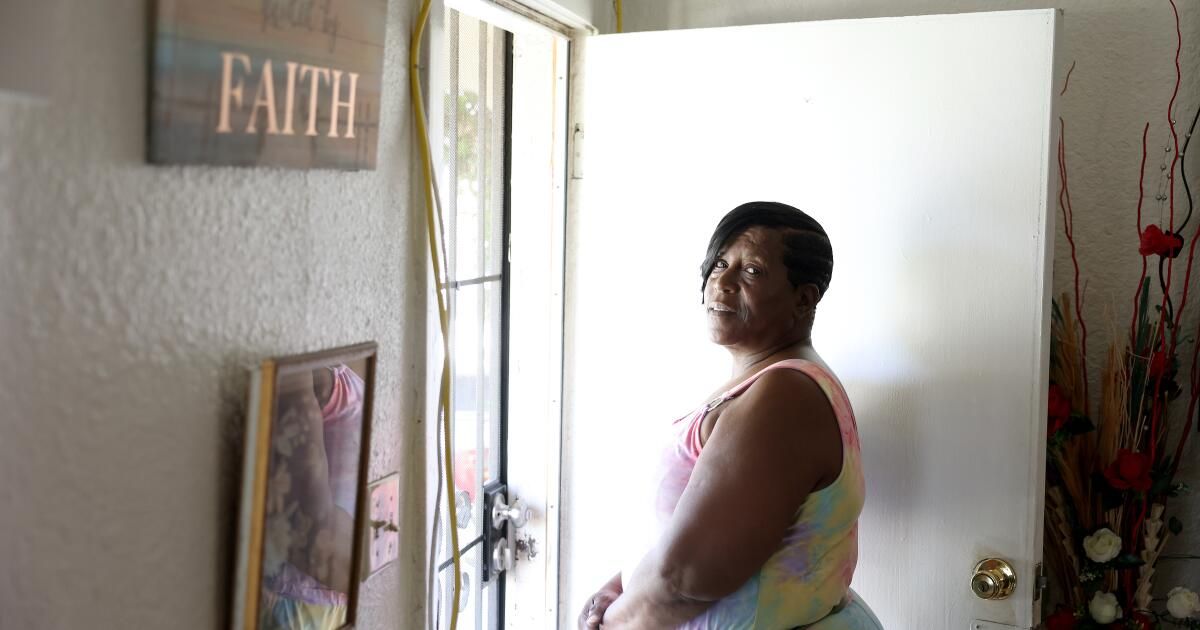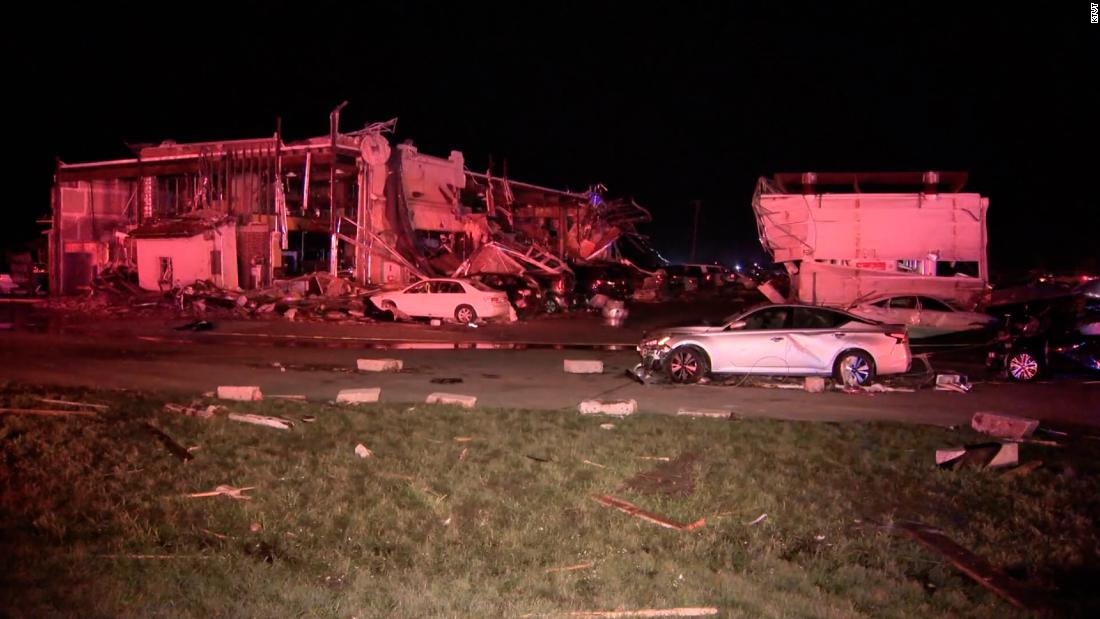Monique Lewis has discovered a few tricks to get her adopted son to school.
Some days, it's a frappuccino at McDonald's. But when the 13-year-old still has trouble getting out of bed, a counselor from Aviva Family and Children's Services is on hand to help.
Lewis's Compton home is the first one the girl has ever run away from, a judge said.
The girl, whom The Times is not identifying because she is a minor, is one of thousands of California foster children who may soon have to move to new homes amid a statewide insurance crisis.
A major insurer says that because of the rising cost of sexual abuse claims, it can no longer cover agencies like Aviva, which recruit, certify and support foster parents. Without insurance, these foster family agencies can no longer supervise parents.
Aviva and many other agencies say they have never been sued for sexual abuse. But citing an overall rise in costly litigation, the Nonprofits Insurance Alliance of California, which says it supports about 90 percent of foster care agencies, will begin allowing policies to lapse in October.
According to child advocates, roughly 1 in 5 of the more than 40,000 children in foster care statewide — who have already experienced tremendous instability in their lives — could be uprooted.
Some government officials familiar with the situation see two possible solutions.
Nonprofits could find new insurers, though many have already left the market. Or, if that doesn’t happen, county governments will have to quickly take over responsibility for the homes now overseen by foster care agencies, a complex bureaucratic process that can take months.
Advocates and foster parents say it’s unclear whether county agencies, which are already short-staffed and oversee about 20,000 children in foster care statewide, can provide the same level of support as nonprofits, which typically offer additional supplemental services.
“These kids are going to suffer more,” said Lewis, a veteran foster mother, from her 13-year-old foster daughter’s bedroom upstairs. “Especially if they are put in the wrong hands.”
The Nonprofits Insurance Alliance of California declined to tell the Times how much it has recently spent on sexual abuse claims, citing confidentiality agreements.
But Pamela Davis, president of the insurance alliance, pointed to a recent $25 million settlement. jury verdict in Sonoma County on behalf of three brothers, ages 7, 5 and 2, who were sexually abused by a foster father.
Similar to how wildfires and floods have made insuring some properties prohibitively expensive, payouts like these are forcing the company out of the market, he said.
Aviva president Amber Rivas has been desperately searching for an insurer before the nonprofit’s policy expires in November. Only one company has reached out to her, offering a quote that “would bankrupt our program.”
“It’s devastating,” Rivas said. “We absolutely support the right of sexual abuse survivors to seek justice in the courts. At the same time, California leaders cannot stand by as foster youth risk ending up on the streets.”
Susan Abrams, deputy director of the California Children's Law Center, which advocates for foster children across the state, said it's crucial that current and former foster children have a path to sue for abuse.
She hopes counties can intervene in foster homes affected by the insurance change so that children can stay there.
Monique Lewis says a judge told her her home was the first place her 13-year-old adopted son hadn't run away.
(Christina House/Los Angeles Times)
The Los Angeles County Department of Children and Family Services, the state’s largest child welfare agency, said in a statement that losing the homes would be “devastating for hundreds of children who could be displaced.”
At least 1,100 of the roughly 13,700 foster children placed by DCFS could have to move to a new home over the next year if their insurance lapses, according to a survey by the California Alliance for Children and Family Services.

The awards hang in the bedroom of Lewis' youngest adopted son.
(Christina House/Los Angeles Times)
After California passed a law in 2020 extending the statute of limitations for adults to file lawsuits for sexual abuse they suffered as children, a wave of lawsuits It has affected school districts, archdioceses and other entities responsible for the welfare of children.
Los Angeles County has provided which could spend up to $3 billion to compensate victims of sexual abuse in juvenile detention centers and foster homes.
“This is not just a [foster family agency] “It’s an issue that’s not limited to counties,” said Eileen Cubanski, executive director of the County Welfare Directors Association of California, an advocacy group for county department heads. “Every entity that has any contact with children … is dealing with this.”
Davis, of the Nonprofits Insurance Alliance, said the statute of limitations change is only part of the picture.
Plaintiffs' attorneys have become more aggressive, encouraging some agencies to settle a claim before fully knowing the facts of the case, he said.
More often, she said, foster care agencies are paying for county governments' mistakes because of contractual clauses that require them to take legal responsibility.
And juries, angered by high-profile sexual abuse scandals within universities and the Catholic Church, are more willing to award large sums even when agencies could not have prevented the abuse, Davis said.
He pointed to the nearly $25 million verdict in Sonoma County. Alternative Family Services, the agency that supported the children in the home, had to pay about $15 million and the foster parents were responsible for the rest.
Davis argued that the agency could not have predicted abuse by a foster parent who passed a background check.
Nonprofits Insurance Alliance sponsored a bill In the most recent legislative session, this would have made it harder for victims to sue foster care agencies.
Much of the bill was scrapped after several advocacy groups argued it had dealt a severe blow to victims' rights and that there was little evidence of a flood of sexual abuse settlements.
“There is not a shred of evidence that this is true,” Ed Howard of the Children's Advocacy Institute said in an interview.
“We haven’t seen it,” said Nancy Peverini of Consumer Attorneys of California, one of the groups that opposed the bill. “They’ve cited one case.”
Both organizations placed much of the blame for the crisis on the Nonprofits Insurance Alliance for allowing the Sonoma County case to go to trial instead of settling and then moving quickly to cancel the policies.
Assemblywoman Gail Pellerin (D-Santa Cruz), who introduced the bill, I reworked it To make it easier for counties to take over responsibility for foster care from nonprofit organizations. The bill is awaiting the governor's signature.
Pellerin stressed in a statement that the bill was a “temporary solution” to keep the most vulnerable foster children in their homes.
“Unfortunately, counties are not prepared to adequately and appropriately care for these children,” she said.
Damien Zillas, corporate compliance counsel for the insurance alliance, said the watered-down bill is likely the nail in the coffin for foster care agencies.
“We stayed in the game as long as we could,” he said.












